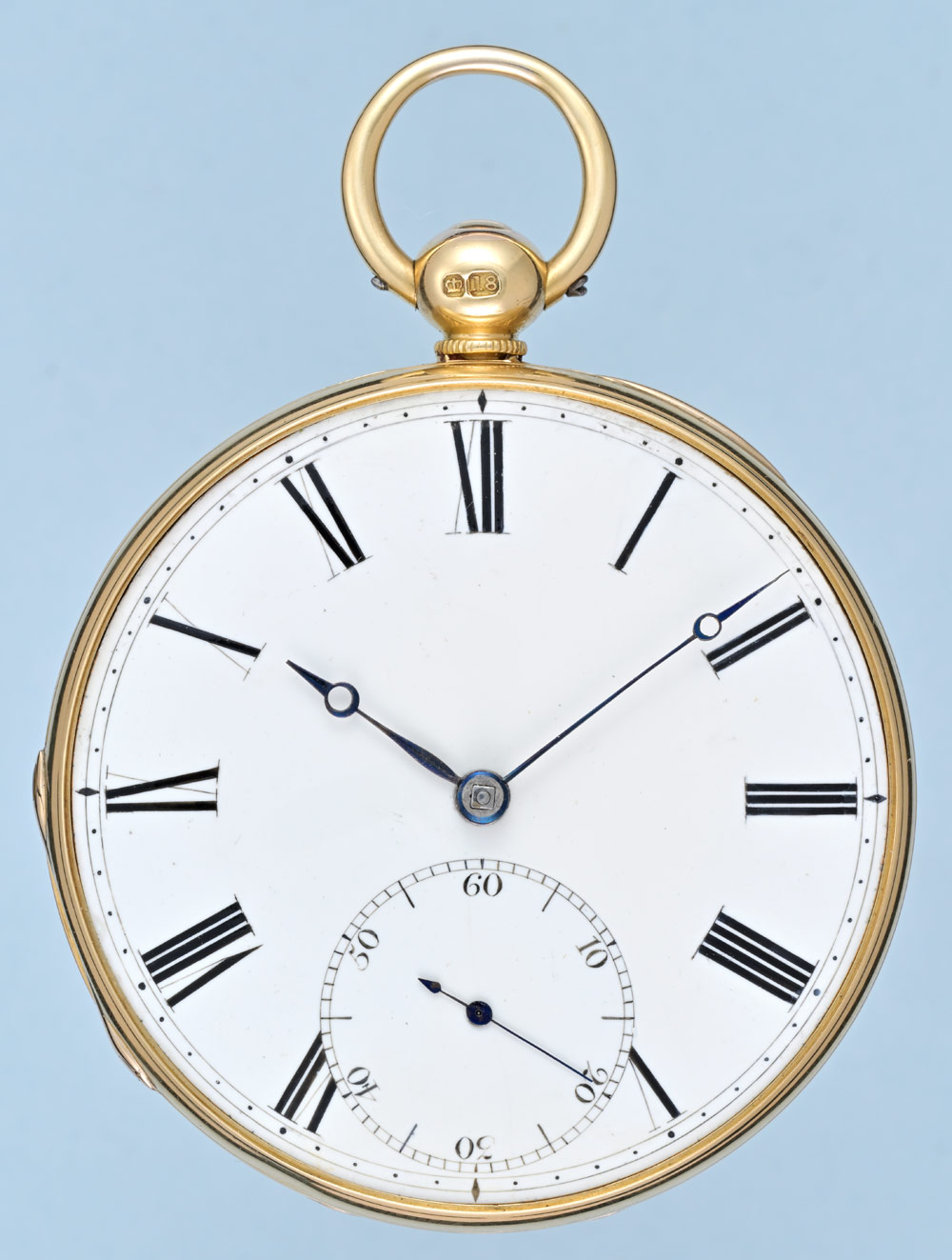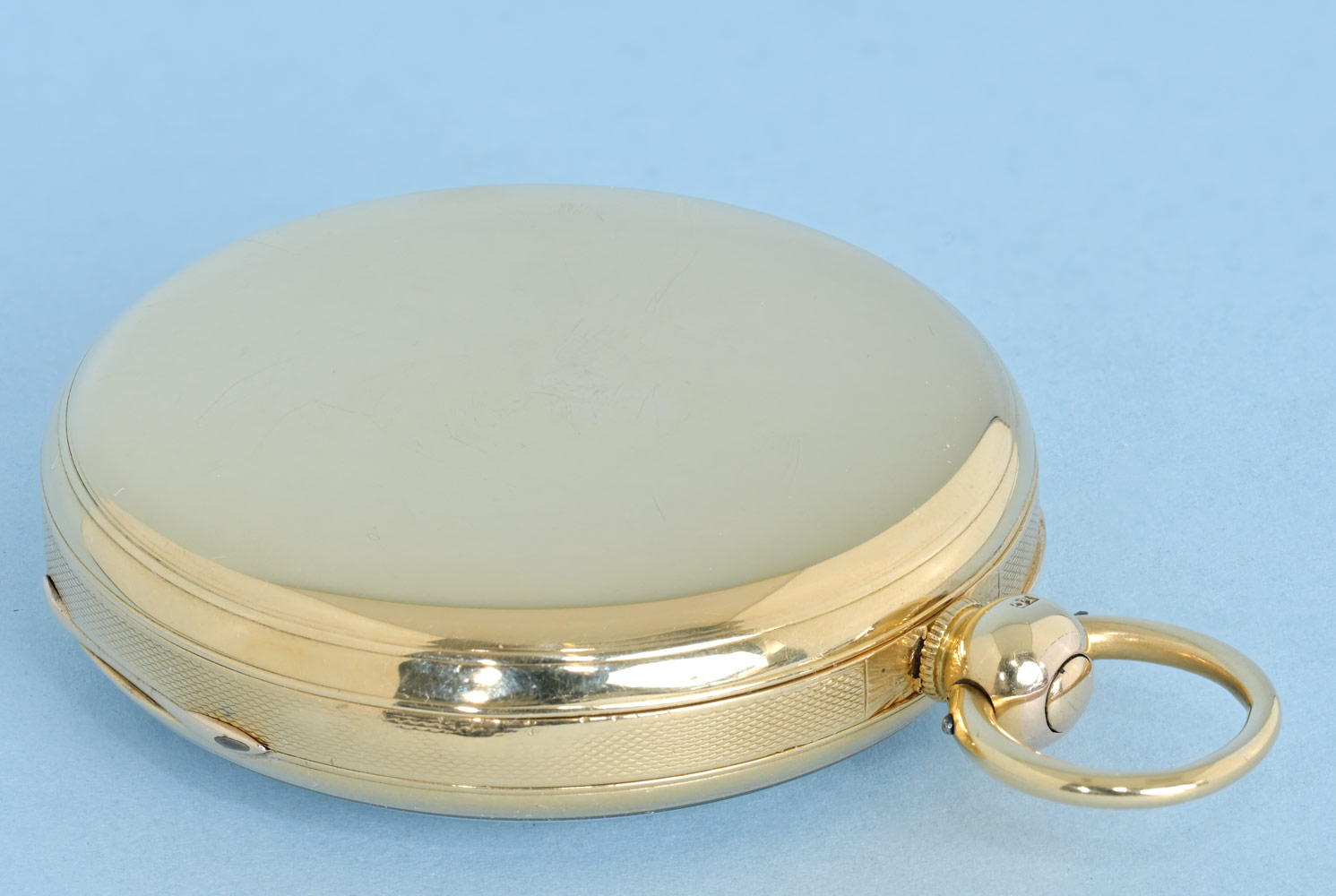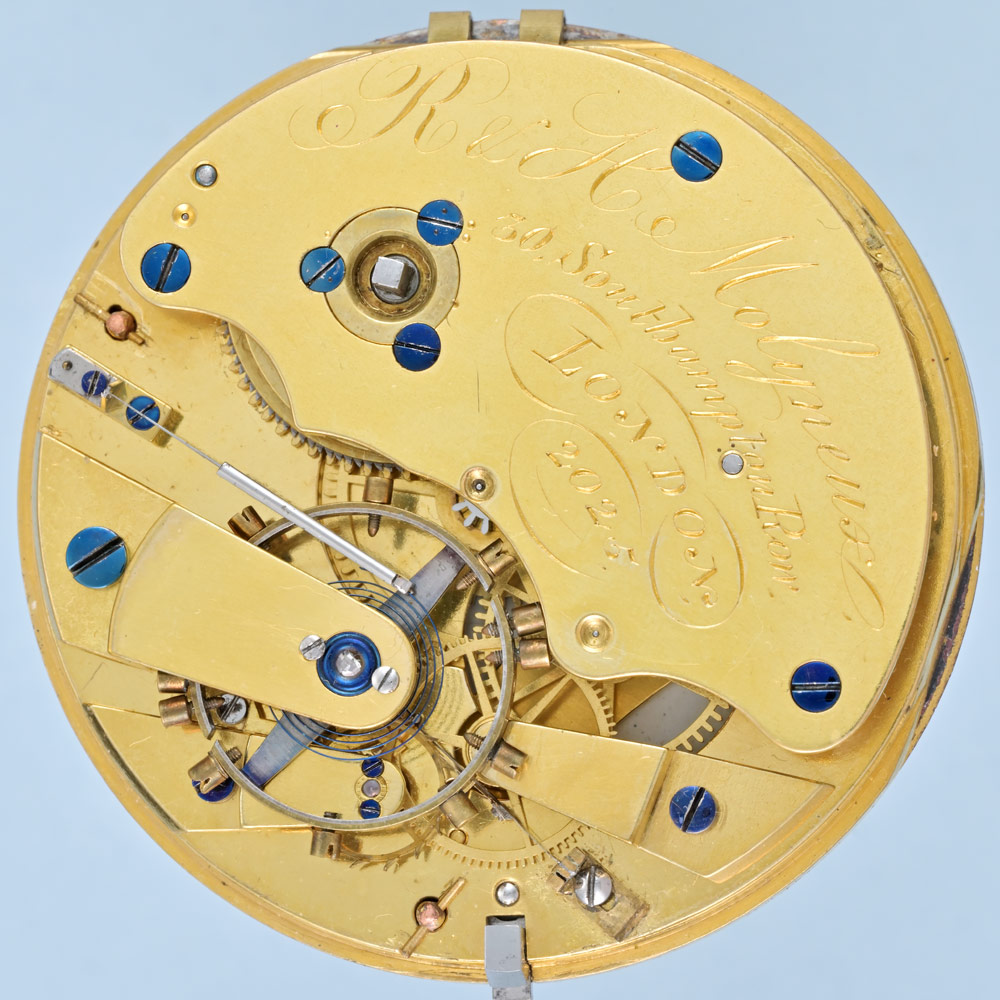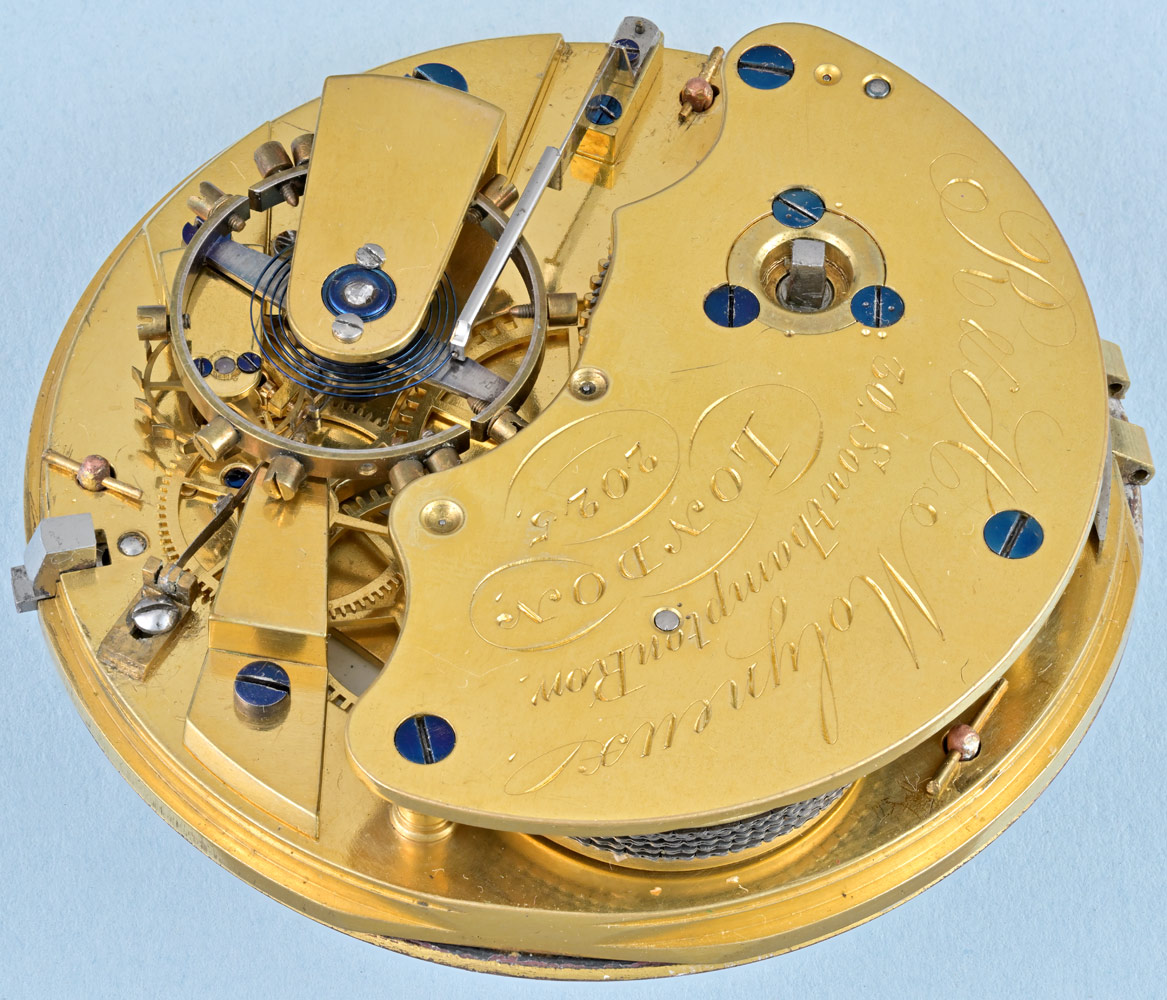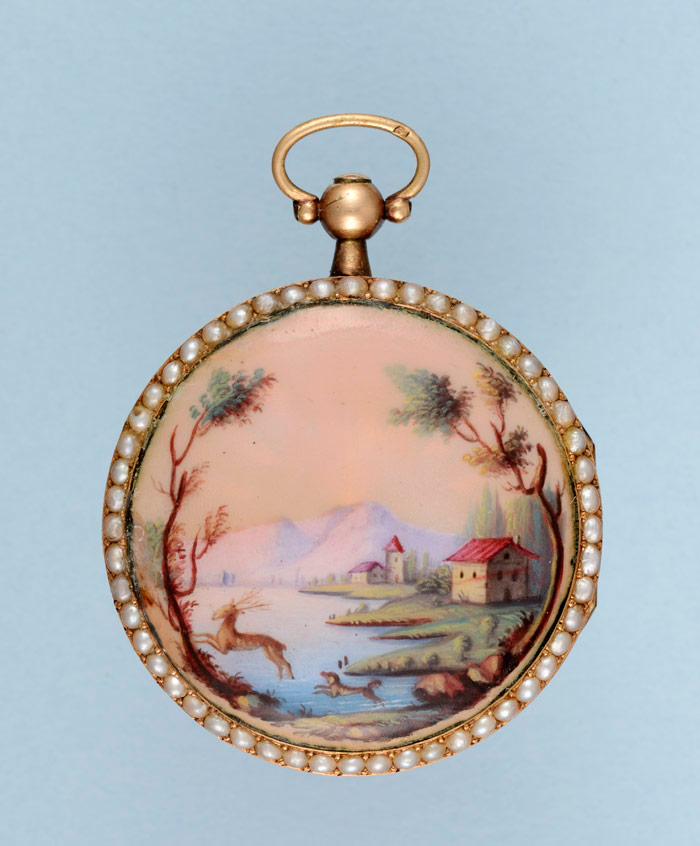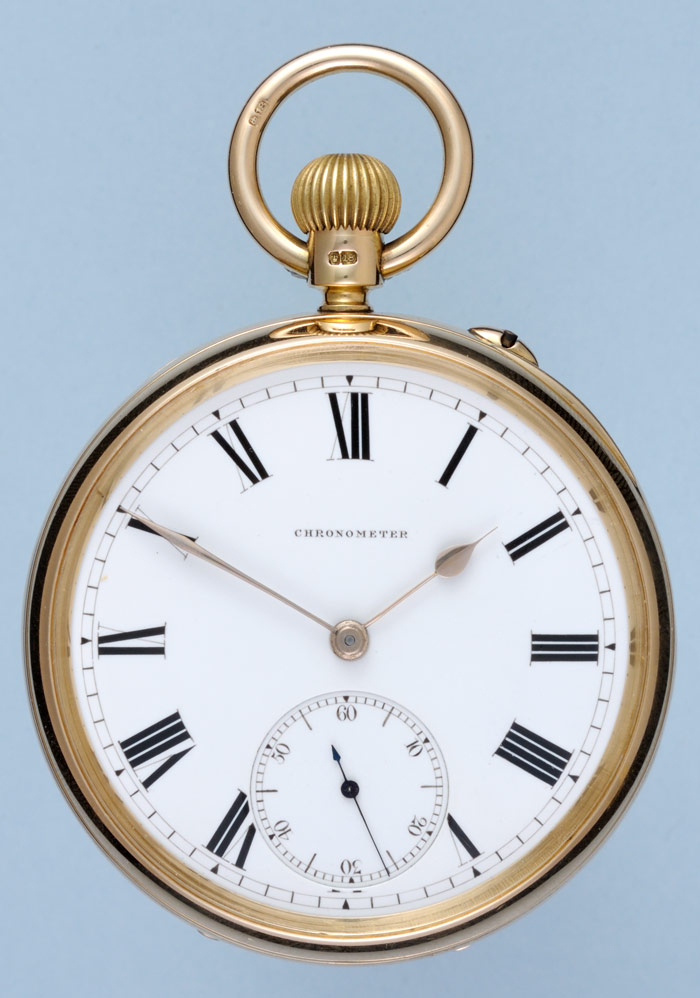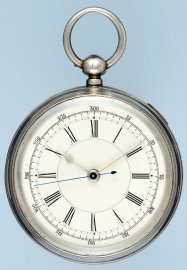A10969
Gold Pocket Chronometer by Molyneux
£4,750.00
Signed
R & H Molyneux - 30 Southampton Row London
Hallmarked London 1837
Diameter 52 mm
Hallmarked London 1837
Diameter 52 mm
1 in stock
Description
A 19th Century English spring detent chronometer with resilient stud in a gold open face case. Gilt half plate keywind movement, the train with six spoke crossings. Fusee and chain, Harrison’s maintaining power. Plain cock with diamond endstone in a blue steel setting, compensation balance. The blue steel spiral hairspring fixed by a polished steel resilient stud screws to the plate on a small gilt block. Earnshaw type spring detent escapement (detent foot repaired), escape pivots with endstones. White enamel dial with subsidiary Roman numerals, blue steel Breguet hands. Plain 18 carat open face drum shaped case with engine turned middle, maker’s mark “LC” in an oval.
An interesting chronometer with rare resilient balance spring stud. Molyneux was almost alone in using this device. The British Museum has a full plate pocket chronometer movement by this maker employing the same resilient stud (Museum number 1958,1201.1608). The section of the stud close to its foot is very thin, similar to that of the detent spring. As the balance oscillates the fixing point of the balance spring is allowed to move sideways in relation to the balance staff. This movement has little effect on the rate controlled by the length of the balance spring. Its intention would appear to be to equalise the rate in the long and short arcs of the balance which is more usually compensated for by the terminal curve or Breguet overcoil. Robert Molyneux was a maker of chronometers who was trained by Thomas Earnshaw. After setting up business on his own he formed a partnership with his son, Henry, 1833 - 1842. Casemaker Louis Comtesse, 10 East Street, Red Lion Square.




